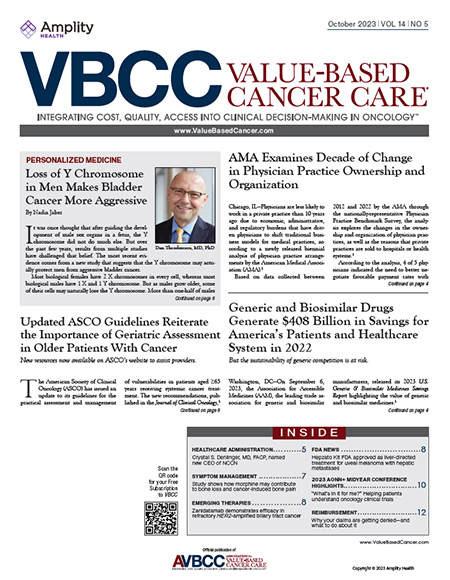A discrete-choice experiment and best-worst scaling survey identified the most and least important multiple myeloma treatment characteristics to patients and their caregivers.
Multiple myeloma (MM) is a complex disease, and despite recent advances, many patients relapse or are refractory to treatment. Treatment of patients who have failed prior lines of therapy is difficult, and outcomes tend to be poor. Patients carry significant symptom burden, and their health-related quality of life (HRQoL) is often impaired, especially in patients with relapsed/refractory MM (RRMM) who are faced with many therapeutic options with varying efficacy, tolerability, and HRQoL considerations. In addition to clinical considerations, there is very little research to explore patient and caregiver preferences in treatment decisions.
A 2022 publication by Auclair and colleagues described results from a web-based discrete-choice experiment (DCE) and best-worst scaling (BWS) survey study quantifying patient and caregiver preferences over a set of MM treatment attributes. The DCE consisted of 6 attributes, which included progression-free survival (PFS), toxicity, and mode and frequency of administration, while the BWS survey included 18 attributes. Treatment cost was assessed using a fixed-choice question.
Respondents included 94 patients with RRMM and 32 caregivers of patients. The most important attributes to both patients and caregivers were severe nerve damage and PFS; however, the relative importance of the 2 attributes differed between patients and caregivers. Patients favored the avoidance of severe nerve damage as the most important factor, while caregivers favored prolonged PFS. However, both patients and caregivers were willing to make trade-offs when it came to treatment decisions, as both groups placed more importance on an increase in PFS from 6 to 12 months over avoiding mild-to-moderate nerve damage. The least important attribute to patients was risk of heart failure, while the least important attribute to caregivers was gastrointestinal problems. The 3 most bothersome treatment-related risks for patients were kidney damage, reduced white blood cell counts, and a weakened immune system. For caregivers, kidney damage, weakened bones, and reduce white blood cell counts were among the 3 most bothersome features. Both patients and caregivers considered modes of administration to be among the least bothersome. Caregivers were not cost sensitive; however, there was a clear trend that cost influenced the decision of some patients.
Considerations from caregivers and patients regarding efficacy, toxicity, mode of administration, and cost are important when making a treatment decision and should be discussed with physicians. Although larger, well-controlled studies may be warranted, this study promotes the need for shared decision-making to help improve treatment satisfaction.
Reference
- Auclair D, Mansfield C, Fiala MA, et al. Preferences and priorities for relapsed multiple myeloma treatments among patients and caregivers in the United States. Patient Prefer Adherence. 2022;16:573-585.


